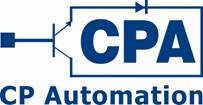Advances in elevator technology have been critical facilitators of the high-rise structures that define our urban skylines. However, upgrades in elevator safety, robustness, quality, space efficiency, and performance are needed to support infrastructure development and meet societal needs. Here John Mitchell, global sales and marketing director at elevator power solution specialist, CP Automation explains the importance of opting for the right surge protection device (SPD) to reduce unnecessary downtime.
Elevator modernisation can feel like an expensive and time-consuming undertaking. Before embarking on a modernisation project, a thorough survey is undertaken to assess the current performance of the system. Once armed with this information, an assessment of whether a modernisation is necessary and, crucially, whether it makes business sense can begin.
One of the most important considerations should of course be the safety of the passengers, maintenance personnel and the lift system. A more modern, safer elevator that complies with the latest standards and offers improved reliability is clearly the desired outcome. However, an important safety consideration, that is often overlooked, is the effectiveness of the system’s SPD.
Reducing downtime and maintenance costs
Elevators typically have service lives of over 20 years, but during this time their performance can decline, leading to increased maintenance costs, increased energy usage and the risk of downtime.
Modernisation can make elevators more energy-efficient and reduce energy costs by feeding otherwise wasted energy back into the building whenever the elevator is travelling in an out of balance direction, rather than releasing it in the form of heat through braking resistors.
For example, CP Automation’s Magnetek range of elevator products include drives with in-built regenerative technology and also separate regenerative ‘bolt-on’ modules that can be retro-fitted to any existing AC drive to produce substantial energy savings — savings which can be easily calculated using our online Energy Savings Calculator tool.
However, as the hardware and software used in elevator applications has advanced, this has brought about an entirely new set of problems and maintenance considerations. While this hardware and software is more reliable than ever before, it is also highly sensitive to fluctuations in power surges.
High voltage surges are normally covered by surge protectors. However, traditional SPDs do not account for low level transient surges that can occur countless times a day, exaggerated by VSD usage. Don’t let the name fool you — these transient surges in the sine wave are very damaging to electrical equipment, as the additional peaks and troughs in the sine wave cause confusion to sensitive devices and machines.
This can cause recurring random failures, lockups and deprogramming, such as those experienced by human machine interfaces (HMIs) used in Destination Despatch systems on each floor. So, to protect the electrical control system, the VSD and lift controller from transients, a more sophisticated transient protection system is needed. Downtime and maintenance can be eliminated if the right surge protection such as SineTamer is in place.
Crucially, SineTamer’s frequency attenuation network monitors the frequency, not just the voltage. The engineered transient disturbance filter is designed to monitor all 360 degrees of the sine wave, making it capable of detecting rapid changes in frequency. This vigilance in turn prevents issues caused by false zero crossings of the sine wave.
When approached carefully, modernisation — whether that’s partial or a complete replacement — can lower repair costs, reduce faults and increase energy savings while improving comfort, efficiency, safety and aesthetics. However, it’s important that facilities’ managers do not overlook the importance of protecting this sensitive equipment from harmful power surges.
For further information about CP Automation’s range of elevator-specific products visit www.cpa-ltd.net.





